The 2017 season will be remembered for the dry conditions through the winter and early part of spring. In fact there seemed to be hardly any rain to speak of at all, for weeks on end.
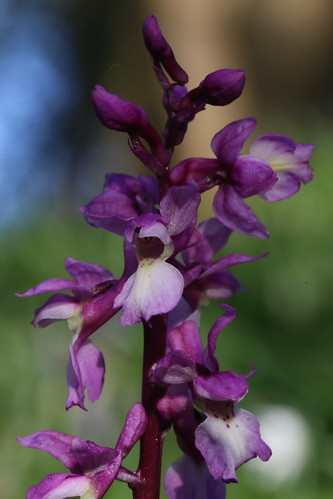
The first Early Purples appeared in North Kent in the last week of March, something we dream of year after year, but actually happened in 2017. To show how variable it can be, I think it was 2014 when any orchid did not appear until the May Bank Holiday, so this was some six weeks earlier. However, the Early Purples suffered much from the dry conditions, with after the first flush of flowering spikes, either the blooms fell off, or were eaten, and later spikes grew without blooms at all.
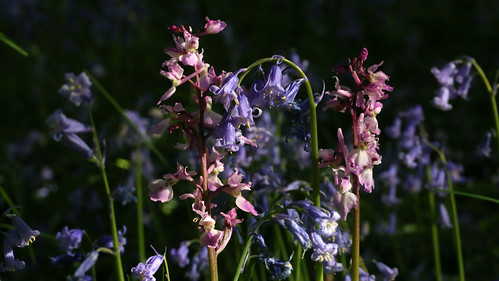
Into April, and at the end, a search of some woodland sites reveals some healthy spikes, but at our local one, bloomless spikes were the order of the day. A disappointing year for EPO then.
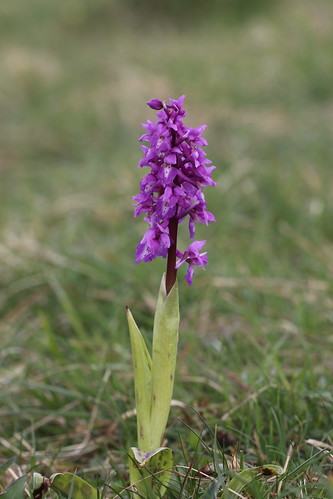
The downland SPO did OK, and were robust compared to other years, which is something of a surprise.
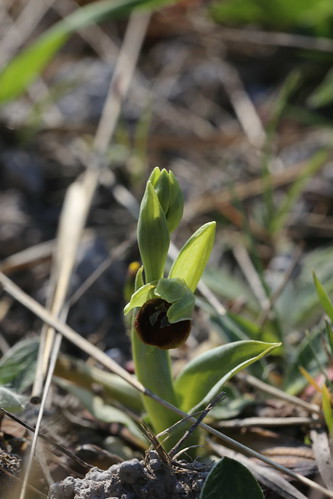

The dry conditions, coupled with the salty atmosphere and strong winds meant that numbers of Early Spiders crashed at Samphire Hoe. Numbers, even at peak times were a fraction of those seen in 2016, where the overflow car park the previous years had many hundreds of spikes, had just two. A friend of mine who counted the spikes, found 300 or so.

I found my first ESO of the season overlooking the docks at Dover, on a path on the White Cliffs, I found a single tiny flowering spikes, brought such joy to me heart, and the walk back from Dover I had planned, was not a waste, not that a walk is ever wasted, but to find the ESO, glorious.

Saying that, the alternative site nearer to home, I found 9 flowering spikes, and with well-formed blooms next to the well trampled paths.
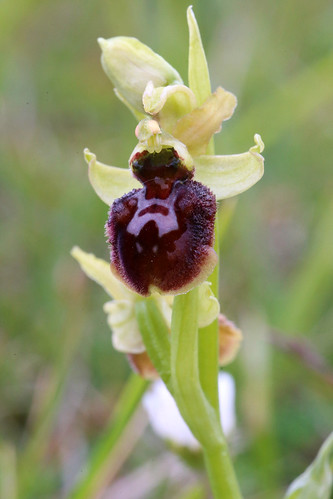
Up on Lydden Down, the other large colony was a month later than their seaside cousins; smaller, darker, but in good numbers too.
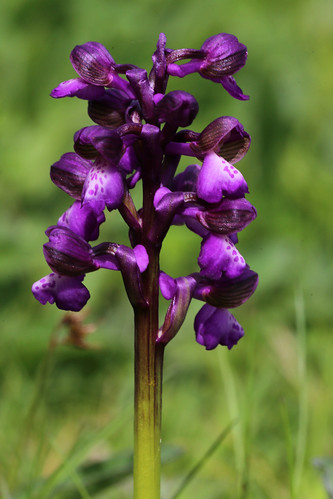
April 17 took us to mid-Kent to the famous Marden Meadow to see the Green Wing orchids. Amazing early for those, but the water meadow giving almost perfect conditions, and even at that early date, putting on a good show.
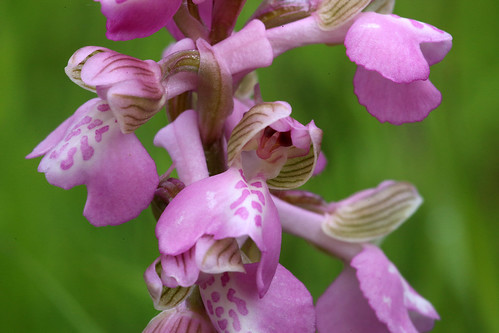
By the end of the month, they Green Wing were at their peak, with good display of the usual purple, the rare white and rarer pinks.

The dry conditions meant that Common Twayblades were not in quite so huge numbers as previously, but their season did just go on and one. Sadly, their best location in East Kent was forested last winter with disastrous results for Twayblades, Lady and Fly with numbers having plummeted and doubtful if they will recover as heavey plant was used whereas in previous years, horses were used. Hmmmmmmm.
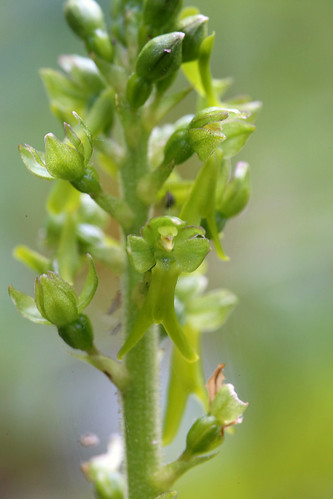
If other species struggled in the dry, the Fly, especially the woodland Fly, thrived. Thrived in numbers not seen before. At the best East Kent location, where spikes in previous years were in tens, were in hundreds this year, and spikes with multiple blooms too.
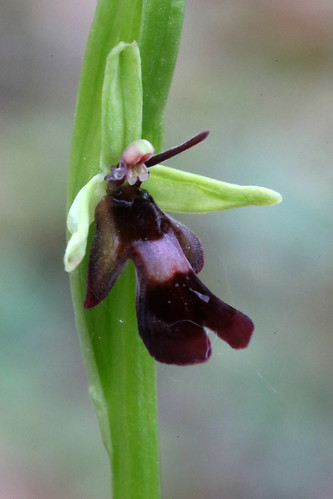
The first woodland Fly appeared on April 23rd, and as the days passed spikes just multiplied.
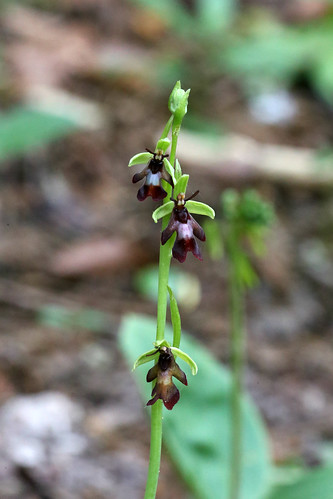
The downland Fly were not in quite so large numbers as in previous years, but still put on a good show.
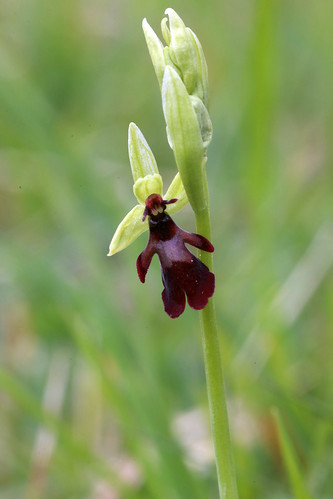
The first Lady appeared at its usual early site, but this time on April 17th! An incredibly early date. On good years usually, we hope to see a spike or two in flower before the end of April, but two weeks before that is stunning.
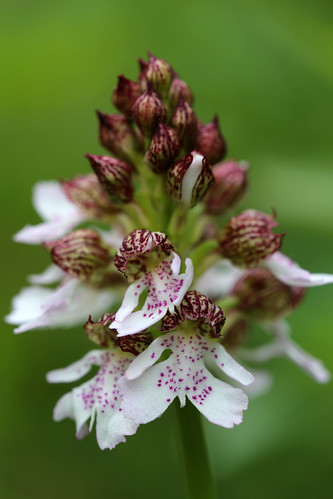
It was a good year at this site, with over a hundred spikes appearing at the bottom of the slope. At the better known site, spikes were at least two weeks behind, but in the same numbers as usual, but near to the Duke of Burgundy site, smaller than usual.
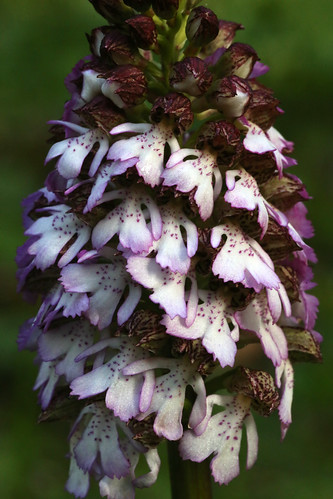
The single Lady on PGD failed, as did the Greater Butterflies, all of them there failed, with only one putting up a spike which soon withered.
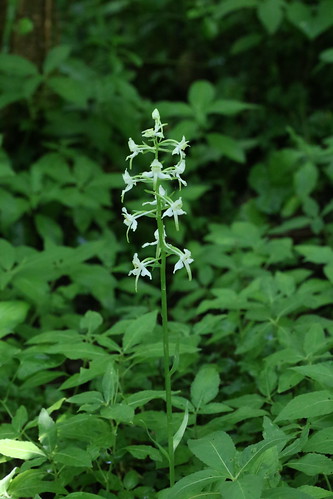
Just as well as I found an alternative site which produced four spikes, of which two flowered, but an altogether disappointing year for the GBO.
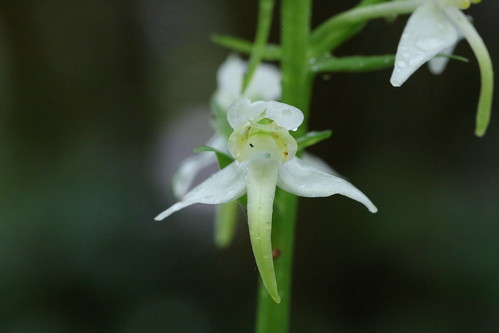
The Lesser Butterfly did well early in the season, but the dozen or so spikes seen growing, only three flowered at the single site I know.
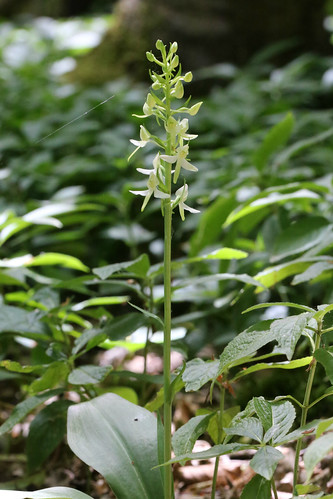
I was blessed with almost perfect photographic conditions at the end of May, when I snapped these:
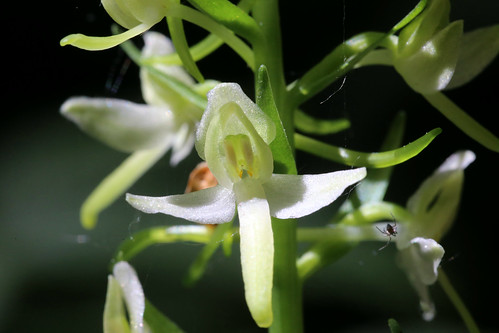
 The first Early Purples appeared in North Kent in the last week of March, something we dream of year after year, but actually happened in 2017. To show how variable it can be, I think it was 2014 when any orchid did not appear until the May Bank Holiday, so this was some six weeks earlier. However, the Early Purples suffered much from the dry conditions, with after the first flush of flowering spikes, either the blooms fell off, or were eaten, and later spikes grew without blooms at all.
The first Early Purples appeared in North Kent in the last week of March, something we dream of year after year, but actually happened in 2017. To show how variable it can be, I think it was 2014 when any orchid did not appear until the May Bank Holiday, so this was some six weeks earlier. However, the Early Purples suffered much from the dry conditions, with after the first flush of flowering spikes, either the blooms fell off, or were eaten, and later spikes grew without blooms at all. Into April, and at the end, a search of some woodland sites reveals some healthy spikes, but at our local one, bloomless spikes were the order of the day. A disappointing year for EPO then.
Into April, and at the end, a search of some woodland sites reveals some healthy spikes, but at our local one, bloomless spikes were the order of the day. A disappointing year for EPO then. The downland SPO did OK, and were robust compared to other years, which is something of a surprise.
The downland SPO did OK, and were robust compared to other years, which is something of a surprise.
 The dry conditions, coupled with the salty atmosphere and strong winds meant that numbers of Early Spiders crashed at Samphire Hoe. Numbers, even at peak times were a fraction of those seen in 2016, where the overflow car park the previous years had many hundreds of spikes, had just two. A friend of mine who counted the spikes, found 300 or so.
The dry conditions, coupled with the salty atmosphere and strong winds meant that numbers of Early Spiders crashed at Samphire Hoe. Numbers, even at peak times were a fraction of those seen in 2016, where the overflow car park the previous years had many hundreds of spikes, had just two. A friend of mine who counted the spikes, found 300 or so. I found my first ESO of the season overlooking the docks at Dover, on a path on the White Cliffs, I found a single tiny flowering spikes, brought such joy to me heart, and the walk back from Dover I had planned, was not a waste, not that a walk is ever wasted, but to find the ESO, glorious.
I found my first ESO of the season overlooking the docks at Dover, on a path on the White Cliffs, I found a single tiny flowering spikes, brought such joy to me heart, and the walk back from Dover I had planned, was not a waste, not that a walk is ever wasted, but to find the ESO, glorious. Saying that, the alternative site nearer to home, I found 9 flowering spikes, and with well-formed blooms next to the well trampled paths.
Saying that, the alternative site nearer to home, I found 9 flowering spikes, and with well-formed blooms next to the well trampled paths. Up on Lydden Down, the other large colony was a month later than their seaside cousins; smaller, darker, but in good numbers too.
Up on Lydden Down, the other large colony was a month later than their seaside cousins; smaller, darker, but in good numbers too. April 17 took us to mid-Kent to the famous Marden Meadow to see the Green Wing orchids. Amazing early for those, but the water meadow giving almost perfect conditions, and even at that early date, putting on a good show.
April 17 took us to mid-Kent to the famous Marden Meadow to see the Green Wing orchids. Amazing early for those, but the water meadow giving almost perfect conditions, and even at that early date, putting on a good show. By the end of the month, they Green Wing were at their peak, with good display of the usual purple, the rare white and rarer pinks.
By the end of the month, they Green Wing were at their peak, with good display of the usual purple, the rare white and rarer pinks. The dry conditions meant that Common Twayblades were not in quite so huge numbers as previously, but their season did just go on and one. Sadly, their best location in East Kent was forested last winter with disastrous results for Twayblades, Lady and Fly with numbers having plummeted and doubtful if they will recover as heavey plant was used whereas in previous years, horses were used. Hmmmmmmm.
The dry conditions meant that Common Twayblades were not in quite so huge numbers as previously, but their season did just go on and one. Sadly, their best location in East Kent was forested last winter with disastrous results for Twayblades, Lady and Fly with numbers having plummeted and doubtful if they will recover as heavey plant was used whereas in previous years, horses were used. Hmmmmmmm. If other species struggled in the dry, the Fly, especially the woodland Fly, thrived. Thrived in numbers not seen before. At the best East Kent location, where spikes in previous years were in tens, were in hundreds this year, and spikes with multiple blooms too.
If other species struggled in the dry, the Fly, especially the woodland Fly, thrived. Thrived in numbers not seen before. At the best East Kent location, where spikes in previous years were in tens, were in hundreds this year, and spikes with multiple blooms too. The first woodland Fly appeared on April 23rd, and as the days passed spikes just multiplied.
The first woodland Fly appeared on April 23rd, and as the days passed spikes just multiplied.
 The downland Fly were not in quite so large numbers as in previous years, but still put on a good show.
The downland Fly were not in quite so large numbers as in previous years, but still put on a good show. The first Lady appeared at its usual early site, but this time on April 17th! An incredibly early date. On good years usually, we hope to see a spike or two in flower before the end of April, but two weeks before that is stunning.
The first Lady appeared at its usual early site, but this time on April 17th! An incredibly early date. On good years usually, we hope to see a spike or two in flower before the end of April, but two weeks before that is stunning. It was a good year at this site, with over a hundred spikes appearing at the bottom of the slope. At the better known site, spikes were at least two weeks behind, but in the same numbers as usual, but near to the Duke of Burgundy site, smaller than usual.
It was a good year at this site, with over a hundred spikes appearing at the bottom of the slope. At the better known site, spikes were at least two weeks behind, but in the same numbers as usual, but near to the Duke of Burgundy site, smaller than usual. The single Lady on PGD failed, as did the Greater Butterflies, all of them there failed, with only one putting up a spike which soon withered.
The single Lady on PGD failed, as did the Greater Butterflies, all of them there failed, with only one putting up a spike which soon withered. Just as well as I found an alternative site which produced four spikes, of which two flowered, but an altogether disappointing year for the GBO.
Just as well as I found an alternative site which produced four spikes, of which two flowered, but an altogether disappointing year for the GBO. The Lesser Butterfly did well early in the season, but the dozen or so spikes seen growing, only three flowered at the single site I know.
The Lesser Butterfly did well early in the season, but the dozen or so spikes seen growing, only three flowered at the single site I know. I was blessed with almost perfect photographic conditions at the end of May, when I snapped these:
I was blessed with almost perfect photographic conditions at the end of May, when I snapped these:


No comments:
Post a Comment